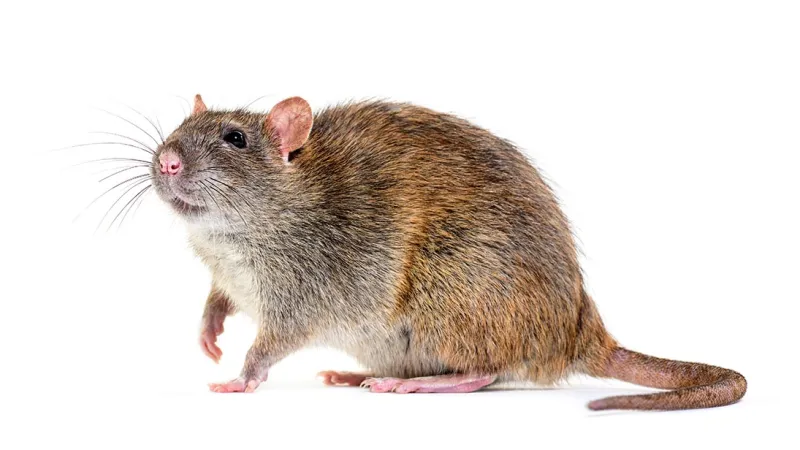
Norway Rats Information

Norway Rats
Norway rats (Rattus norvegicus), also known as brown rats or sewer rats, are among the most widespread and economically damaging rodents in the world. These rodents have successfully adapted to various environments, making them a common sight in urban, suburban, and rural areas across the globe. Despite their name, Norway rats did not originate in Norway but likely migrated from Asia to Europe centuries ago. In this article, BREDA Pest Management explores the characteristics, habits, and impact of Norway rats on human populations.
More about Norway Rats
Norway rats are relatively large rodents, measuring between 7 to 10 inches in length, excluding the tail, which adds an additional 6 to 8 inches. They have stout bodies covered in coarse brown or gray fur, with a blunt muzzle and small ears. Their tails are scaly and shorter than their bodies, but still longer compared to other rat species. Norway rats are excellent climbers and swimmers, which contributes to their ability to colonize diverse environments.
These rats are primarily nocturnal creatures, preferring to forage and explore during the cover of darkness. They are opportunistic omnivores, feeding on a wide range of food sources, including grains, fruits, vegetables, meats, and even garbage. Their adaptability allows them to thrive in various habitats, from sewers and basements to fields and forests.
Norway rats have a high reproductive potential, with females capable of producing 3 to 12 litters per year, each consisting of 7 to 14 pups. The gestation period lasts approximately three weeks, and the young rats mature rapidly, reaching sexual maturity within three to four months. This rapid breeding cycle enables the population to grow exponentially under favorable conditions.
Norway rats are not just a nuisance; they pose significant health risks and can cause considerable damage to buildings and infrastructure. As carriers of numerous pathogens, they can transmit diseases to humans and other animals through bites, scratches, urine, and feces. Some of the diseases associated with Norway rats include leptospirosis, hantavirus, salmonellosis, and rat-bite fever.
Furthermore, their gnawing behavior can lead to structural damage, including chewed wires, woodwork, insulation, and pipes. This poses a fire hazard and can cause water leaks, electrical malfunctions, and costly repairs. In agricultural settings, Norway rats can devastate crops, leading to substantial economic losses for farmers.
Given their adaptability and reproductive capabilities, controlling Norway rat populations requires a multifaceted approach. Integrated Pest Management (IPM) strategies are commonly employed, combining various techniques such as habitat modification, exclusion, trapping, and baiting. Effective waste management, proper storage of food, and sealing potential entry points into buildings are crucial for preventing infestations.
In urban areas, municipal pest control programs often focus on sewer maintenance and regular garbage collection to minimize rat populations. Collaboration between government authorities, pest control professionals, and community members is essential to tackle the challenges posed by Norway rats effectively.
BREDA Pest Management is your trusted and experienced pest control company that specializes in effectively dealing with Norway rat infestations. With their expertise and knowledge, they employ a comprehensive approach to tackle the issue. Additionally, BREDA Pest Management emphasizes the importance of ongoing monitoring and preventive measures to ensure long-term rat control. Their team of skilled professionals is dedicated to providing efficient and reliable pest control services, making them the ideal choice for effective Norway rat management.



